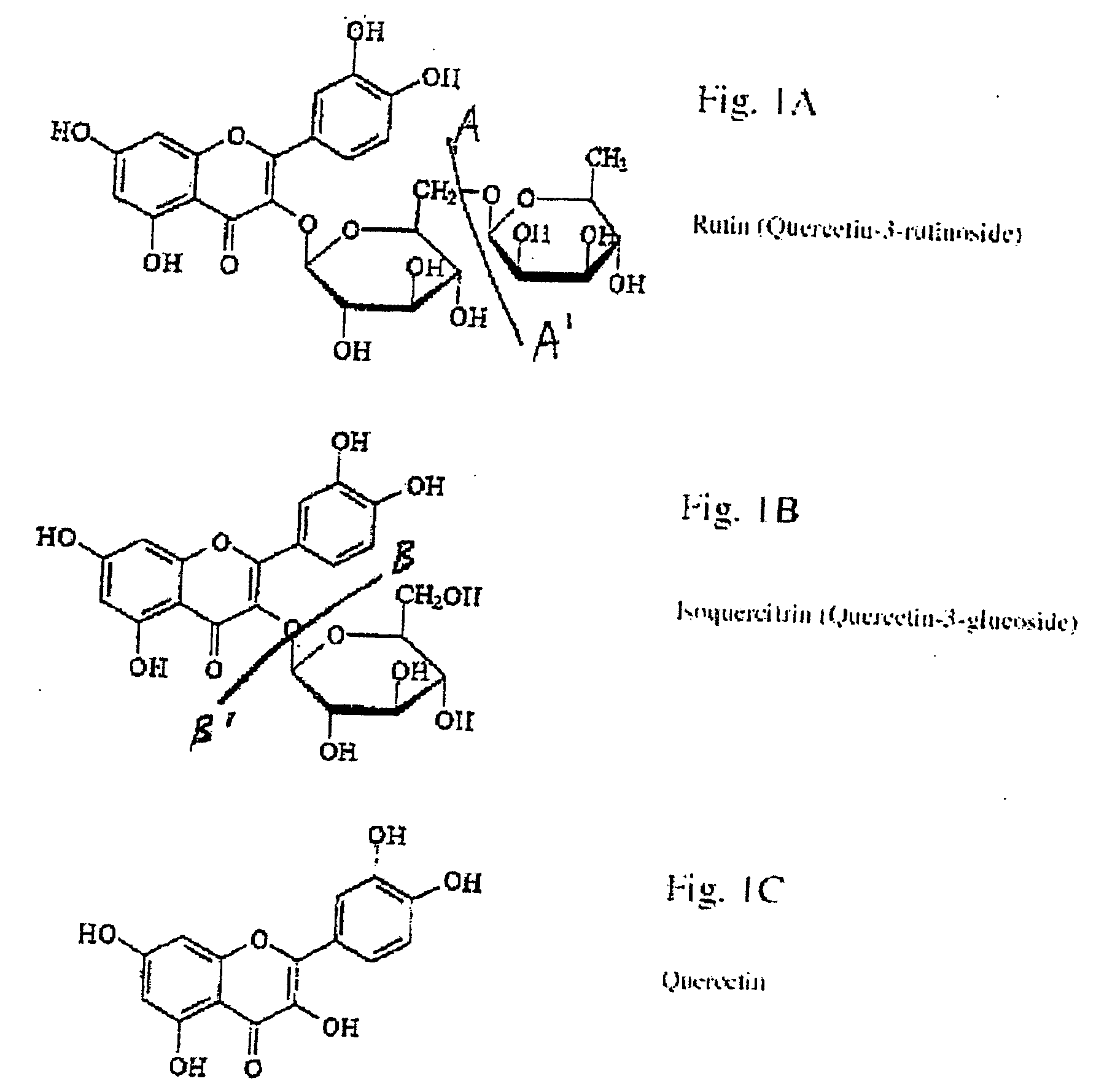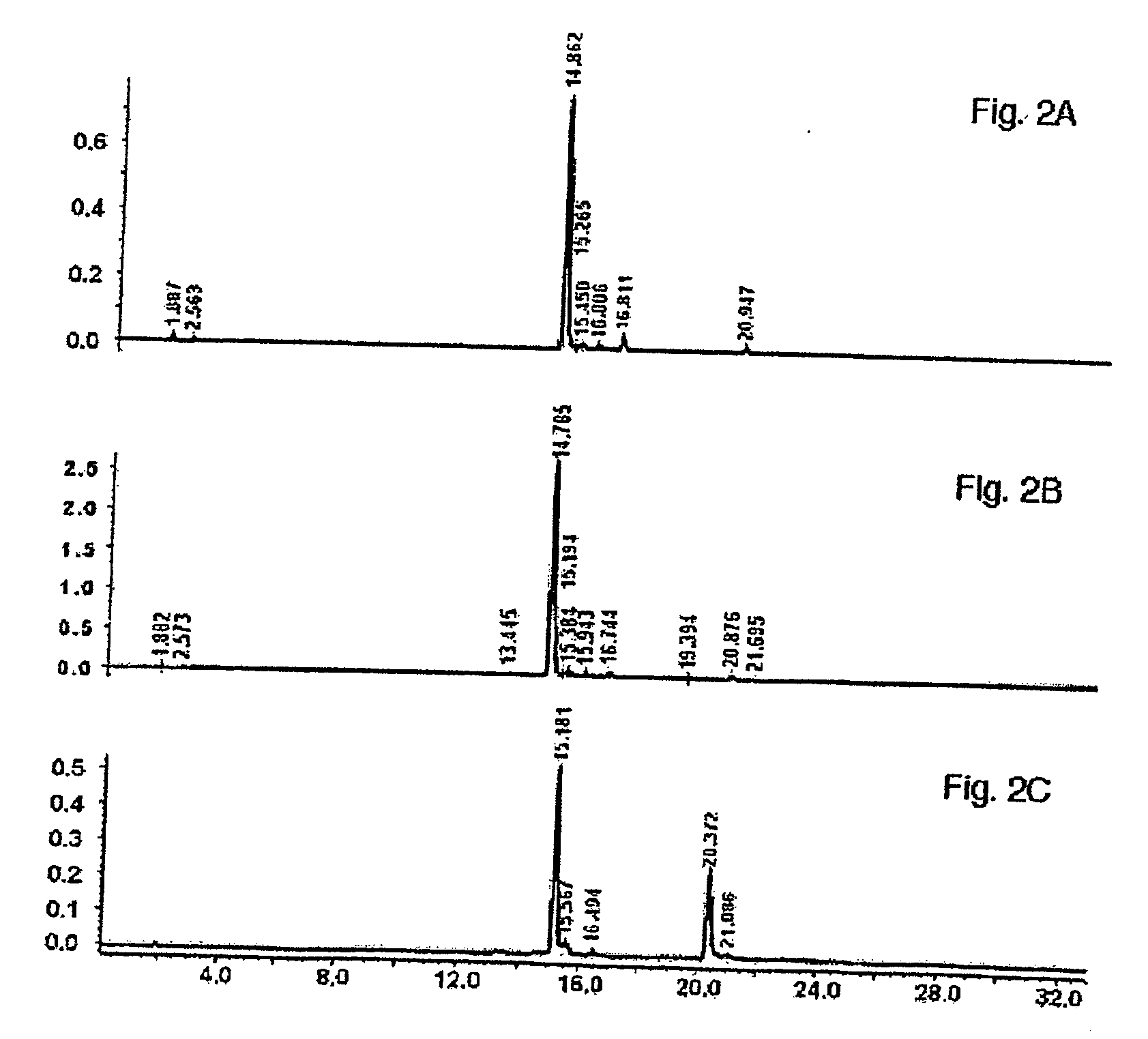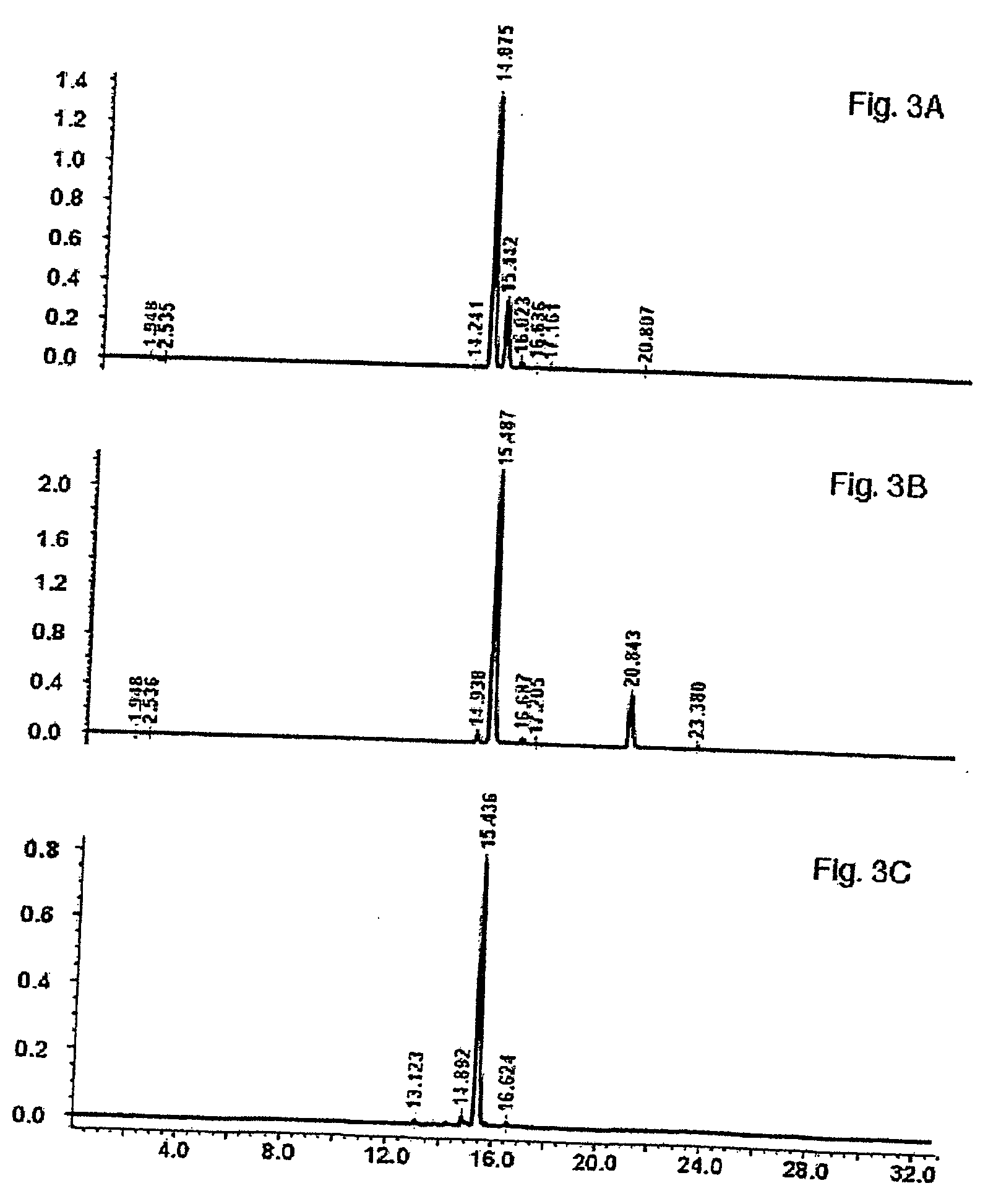Extraction, purification and conversion of flavonoids from plant biomass
a technology of plant biomass and purification, applied in the direction of biocide, food preparation, plant growth regulator, etc., can solve the problems of inability to detect metabolites in plasma, no human research has evaluated the possible beneficial effect of quercetin for diabetics, and the carcinogenicity of dioxan
- Summary
- Abstract
- Description
- Claims
- Application Information
AI Technical Summary
Benefits of technology
Problems solved by technology
Method used
Image
Examples
example 1
Aqueous Extraction, Concentration and Precipitation of Rutin from Buckwheat Leaf Material
[0132] Following harvest and drying, buckwheat leaves were prepared for extraction by grinding on a Wiley mill to pass a 2 mm screen. One kg of ground buckwheat leaves (rutin content is 3.74%, dry weight basis) were extracted in 10 L of water with continuous stirring at 90° C. for 1 hour. The resulting suspension was filtered, and the filtercake was washed 2 times with 300 ml of hot (95° C.) water. The wash filtrate was combined with the extract to give a combined extract volume of 8.6 L. The aqueous extraction procedure recovered 36% of the available rutin from the leaves. The extract was concentrated under reduced pressure to approximately ⅕ or 1 / 10 of the original volume. The concentrated extract was stored in the refrigerator (4° C.) overnight at which point the flavonoids precipitated out of solution. The precipitated material was collected following centrifugation at 7,000×g and filtratio...
example 2
Aqueous Alcohol Extraction, Concentration and Precipitation of Rutin from Buckwheat Leaf Material
[0133] Following harvest and drying, buckwheat leaves were prepared for extraction by grinding on a Wiley mill to pass a 2 mm screen. One kg of ground buckwheat leaves (rutin content is 3.74%, dry weight basis) were extracted in 10 L of 50% (v / v) aqueous menthol with continuous stirring at 40° C. for 3 hours. The resulting suspension was filtered, and the filtercake was washed with warm (40° C.) 50% (v / v) aqueous methanol. The wash filtrate was combined with the extract The extraction procedure recovered 65% of the available rutin from the leaves. FIG. 2A illustrates the concentration of rutin in the methanol extraction. The extract was concentrated under reduced pressure to approximately ⅕ the original volume. The concentrated extract was stored in the refrigerator (4° C.) overnight at which point the flavonoids precipitated out of solution. The precipitated material was collected foll...
example 3
Purification of Rutin from the Intermediate Flavonoid Enriched Product Isolated from Buckwheat Leaves
[0134] The enriched rutin product from Example 2 was dissolved in warm methanol with vigorous stirring on a magnetic stirrer to facilitate complete solubilization of the rutin. Using vacuum filtration, any insoluble material was removed from the solution. The solution was evaporated to dryness at 40° C., under reduced pressure. The residue was then suspended in hot (90° C.) water with continuous stirring until most of the precipitate had dissolved. The suspension was allowed to precipitate in the refrigerator overnight. The precipitate was removed by vacuum filtration, and freeze-dried. The purified rutin precipitate was dissolved in methanol, filtered through a 0.45 um nylon syringe filter, and then analyzed by RP-HPLC to determine the purity of the product. Rutin content can be increased to about 70% or higher after repeat solubilization / crystallization without using chromatograph...
PUM
| Property | Measurement | Unit |
|---|---|---|
| Temperature | aaaaa | aaaaa |
| Temperature | aaaaa | aaaaa |
| Temperature | aaaaa | aaaaa |
Abstract
Description
Claims
Application Information
 Login to View More
Login to View More - R&D
- Intellectual Property
- Life Sciences
- Materials
- Tech Scout
- Unparalleled Data Quality
- Higher Quality Content
- 60% Fewer Hallucinations
Browse by: Latest US Patents, China's latest patents, Technical Efficacy Thesaurus, Application Domain, Technology Topic, Popular Technical Reports.
© 2025 PatSnap. All rights reserved.Legal|Privacy policy|Modern Slavery Act Transparency Statement|Sitemap|About US| Contact US: help@patsnap.com



